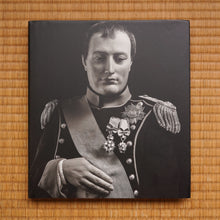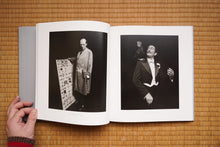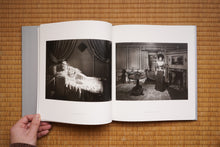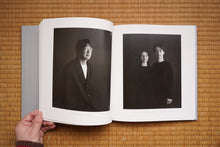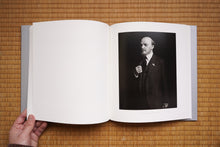
Last copy! Some shelf wear. Jacket in protective mylar sleeve.
杉本博司 写真集
At first glance, Hiroshi Sugimoto's photographic portrait of King Henry VIII of England is arresting: his camera has captured the tactility of Henry's luxurious furs and silks, the elaborate embroidery of his doublet, and the light reflecting off of each shimmering jewel. The contours of the king's face are so lifelike that he appears to be almost three- dimensional. It seems as though the twenty-first century artist has traveled back in time nearly five hundred years to photograph his royal subject. While Sugimoto's portraits of historical figures appear to capture a lived moment in time, they are fictions. These portraits are in fact at least twice removed from the subject: his photograph captures a wax figure that has been created by a sculptor from either a photographic portrait or a painted one. Sugimoto has photographed his portraits of historical subjects in black and white, with each "sitter" posed against a black background, giving the images an austere formality. The black backdrop, free of any props or additional visual information, amplifies the illusion that we are viewing a contemporary portrait in which the subject has stepped out of history. Other portraits appear to be photojournalistic. Sugimoto's image of the Duke of Wellington at Napoleon's deathbed is actually a photograph of the mise en scene created by the wax museum, but it registers as real in our minds. The portraits of wax figures, which in this volume are presented alongside a handful of portraits of living subjects and photographs of memento mori, call into question what it is the portrait captures. As with his other major bodies of work-Dioramas, Seascapes, Theaters-Sugimoto's Portraits address the passage of time and history. We recognize these historical figures because of the many contemporaneous drawings, paintings, sculptures, and photographs that have recorded them. We take it for granted that a photograph of a living subject is true, but what does that mean? Are Sugimoto's portraits of living subjects more "true" than the historical portraits of wax figures? Is Hans Holbein's painted portrait of Henry VIII truer than Sugimoto's photograph of the wax figure made from Holbein's painting?
Publisher: Damiani
Pub Date: 2018
Format: Hardcover with bw & color illus.
Pages: 271 pp.
Size: 252 x 278 mm
ISBN: 9788862085823







